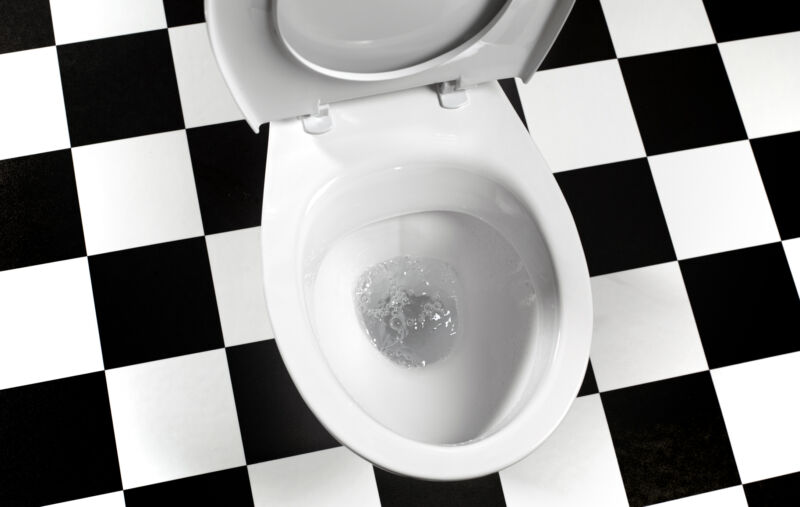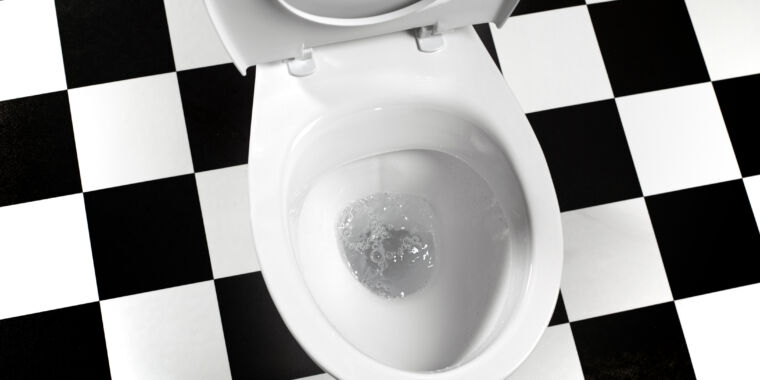Should you flush with toilet lid up or down? Study says it doesn’t matter

Enlarge / Whether the toilet lid is up or down doesn’t make much difference in the spread of airborne bacterial and viral particles.
File this one under “Studies We Wish Had Let Us Remain Ignorant.” Scientists at the University of Arizona decided to investigate whether closing the toilet lid before flushing reduces cross-contamination of bathroom surfaces by airborne bacterial and viral particles via “toilet plumes.” The bad news is that putting a lid on it doesn’t result in any substantial reduction in contamination, according to their recent paper published in the American Journal of Infection Control. The good news: Adding a disinfectant to the toilet bowl before flushing and using disinfectant dispensers in the tank significantly reduce cross-contamination.
Regarding toilet plumes, we’re not just talking about large water droplets that splatter when a toilet is flushed. Even smaller droplets can form and be spread into the surrounding air, potentially carrying bacteria like E. coli or a virus (e.g., norovirus) if an infected person has previously used said toilet. Pathogens can linger in the bowl even after repeated flushes, just waiting for their chance to launch into the air and spread disease. That’s because larger droplets, in particular, can settle on surfaces before they dry, while smaller ones travel further on natural air currents.
The first experiments examining whether toilet plumes contained contaminated particles were done in the 1950s, and the notion that disease could be spread this way was popularized in a 1975 study. In 2022, physicists and engineers at the University of Colorado, Boulder, managed to visualize toilet plumes of tiny airborne particles ejected from toilets during a flush using a combination of green lasers and cameras. It made for some pretty vivid video footage:
Colorado researchers managed to visualize toilet plumes in 2022 using green lasers and strategically placed cameras.
“If it’s something you can’t see, it’s easy to represent it doesn’t exist,” study co-author John Grimaldi said at the time. They found that the ejected airborne particles could travel up to 6.6 feet per second, reaching heights of 4.9 feet above the toilet within 8 seconds. And if those particles were smaller (less than 5 microns), they could hang around in that air for over a minute.
More relevant to this latest paper, it’s been suggested that closing the lid before flushing could substantially reduce the airborne spread of contaminants. For example, in 2019, researchers at University College Cork deployed bioaerosol sensors in a shared lavatory for a week to monitor the number and size of contaminant particles. They concluded that flushing with the toilet lid down reduced airborne droplets between 30 and 60 percent. But this scenario also increased the diameter of the droplets and bacteria concentration. Leaving the lid down also means the airborne microdroplets are still detectable 16 minutes after flushing, 11 minutes longer than if one flushed with the lid up.
Should you flush with toilet lid up or down? Study says it doesn’t matter Read More »
